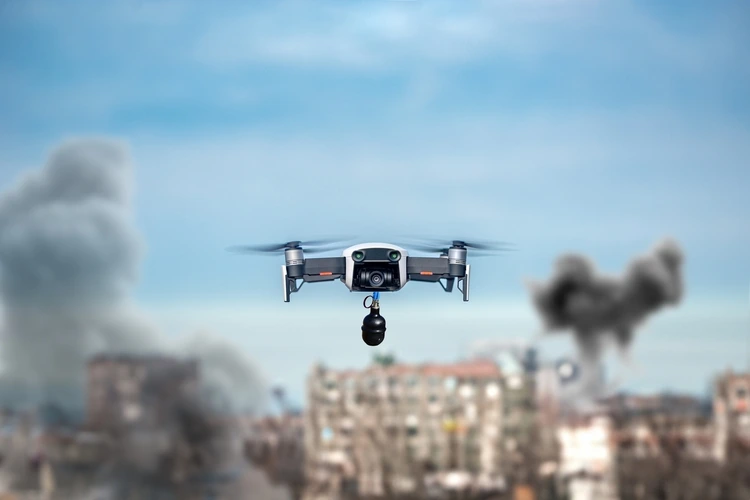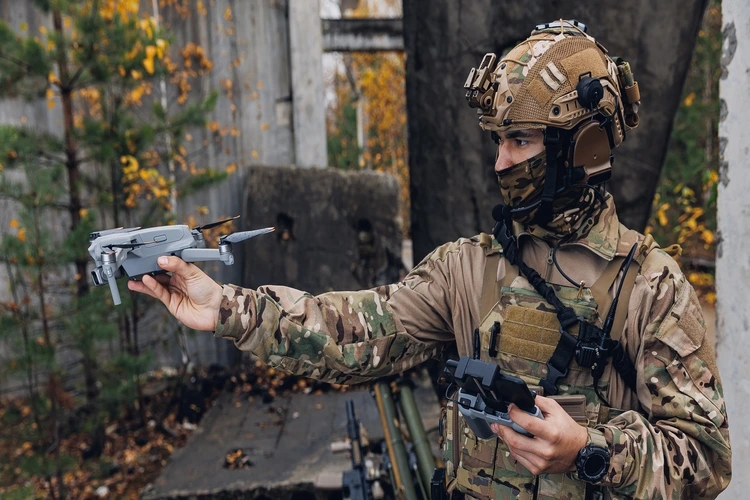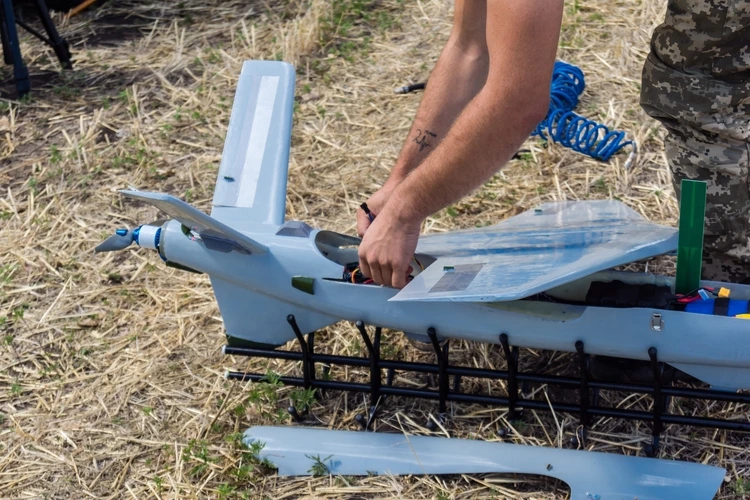

Drones may rewrite battle plans, but rivers, deserts and choke points still get a vote on who wins and who loses

By
The geography of distance has always been a fundamental part of each technological era of warfare. We are now in a new era – drone warfare – but still, geography will have its say.
As early as 400,000 years ago, combatants were separated by the distance of how far they could throw their spears. Slings followed, but it wasn’t until roughly 60,000 BCE that bows and arrows began to be used as stand-off weapons. Eventually we ‘advanced’ through rifles and cannons, and into the age of mechanised warfare.
Enjoying this article? Check out our related reads…
At all times, geography had an impact. Rivers, mountains and deserts were barriers – sometimes impossible to cross. Technology such as railways, metalled roads and runways overcame them and allowed vast armies to move long distances, but still geography matters. It forces routes over bridges, through narrow valleys and into choke points, and military strategy must include attacking supply routes heading to the front lines.
Enter the drones. Their potential to transform combat was signalled in 2020 when Armenia prepared for a 20th-century war, not knowing Azerbaijan had read the future.
The Azeris used their Turkish Bayraktar drones to destroy Armenia’s air defences, then went after its tanks and artillery. Some cut supply lines while others fed live pictures of the movement of surviving Armenian forces. Armenia failed conceptually and so failed on the battlefield. This wasn’t a one-off – it was a preview of how the war in Ukraine would develop and why countries across the globe are building fleets of drones.

Ukraine’s military is now probably the world’s leading innovator in this new type of warfare. Reports suggest its drones are responsible for 80 per cent of Russian losses. Tanks are more vulnerable than ever before, large convoys moving troops to the front are spotted and attacked, as are platoons trying to hide in wrecked houses.
Russian forces have responded with their own innovations and set up an elite drone force called Rubicon, thought to have at least seven units each with about 130–150 personnel. Both sides
are pioneering how to defend against drones using nets and disruptive radio waves, or by hacking into their computer systems.
Away from the front lines, new challenges have emerged, which, although not caused by drones, may be met by them. As the range of accurate missiles has increased, so have the distances of major supply depots from the front lines.
Not only is there the risk of a huge loss of supplies in one major hit, but even if the depots can be protected, getting food, ammunition and medical supplies to the front lines has become a longer and more dangerous process. Large convoys and helicopters make easy targets, and the closer they get to the front lines, the more vulnerable they are.
The solution may be to create a new system – dispersing supplies into smaller, hardened depots closer to the front and using drones to deliver material to the troops. More depots mean more routes to them. This reduces the risk of a catastrophic strike on a single supply chain, leading to a collapse on the front line. Delivery to the troops by hundreds of drones means that even if a few are hit, most will get through – and there’s no risk to a helicopter pilot or truck driver.

Already, drones are being used to ferry water, ammunition and medicines to troops at the front. Drones capable of delivering serious bulk haven’t yet been developed, although Ukraine does use UK-built Malloy Aeronautics machines, some of which can transport up to 180 kilograms over 70 kilometres. Manufacturers around the world are working on even more powerful machines.
These, and those already in service, need to be mass produced and built to withstand electronic warfare attacks. Because the drones are battery-powered, troops will require large numbers of recharging units and a regular supply of electricity. This means that, just as fuel is a crucial resource in a military’s ability to fight, so too will be electricity.
Therefore, the country that ensures its forces have the new supply mechanisms, the drones, the best computer chips in them and the electricity to feed them will be the military that stands a fighting chance in the conflicts to come.
This is why Pakistan and India are investing so heavily in drones operating along their joint border, and with Afghanistan and China, respectively. It’s why the two warring factions in Sudan are using drones supplied by Russia and the UAE (among others), and why Taiwan aims to produce 15,000 AI- enhanced drones a month by 2028.
War is being transformed, but again, the geography of distance influences the role of the transformative weapon.



